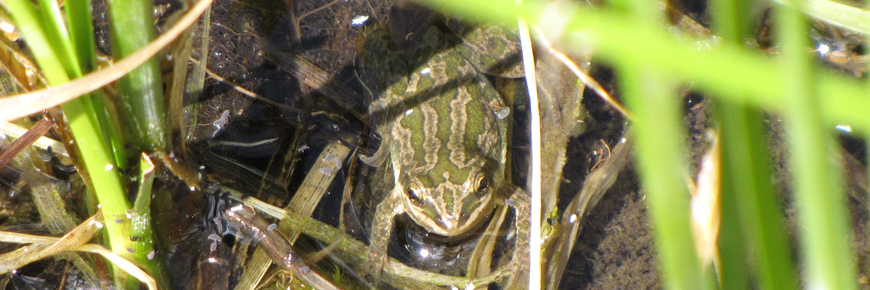
Amphibian occupancy
Elk Island National Park
Elk Island National Park is home to two frog species: the wood frog (Lithobates sylvaticus) and boreal chorus frog (Pseuacris maculata). These amphibians breed in April and May in aquatic habitats including wetlands, lake edges, ditches and temporary ponds. When mature, amphibians also use surrounding moist forest habitats. Changes to the health of Elk Island’s wetlands (from pollution, drought, invasive species, or other factors) may affect the frogs’ ability to breed in the park. The sensitivity of amphibians to environmental changes and pollutants make them a useful indicator for possible problems with aquatic ecosystems. Elk Island National Park is also home to two other amphibian species: the western/boreal toad (Anaxyrus boreas) and the western tiger salamander (Ambystoma mavortium).
In the spring, trained staff and volunteers visit monitoring locations and listen for calls from the two frog species to determine occupancy (do frogs breed here?) and relative abundance (are there few or a lot of frogs breeding?). Frog populations normally fluctuate from year to year, so long-term monitoring of population trends is needed to detect significant population changes.
If you would like to be one of these volunteers, please contact benevoleselkisland-elkislandvolunteers@pc.gc.ca.
Have you heard the frogs calling in the springtime? Sometimes the frogs call so loudly they can be heard from inside your car!
- Date modified :